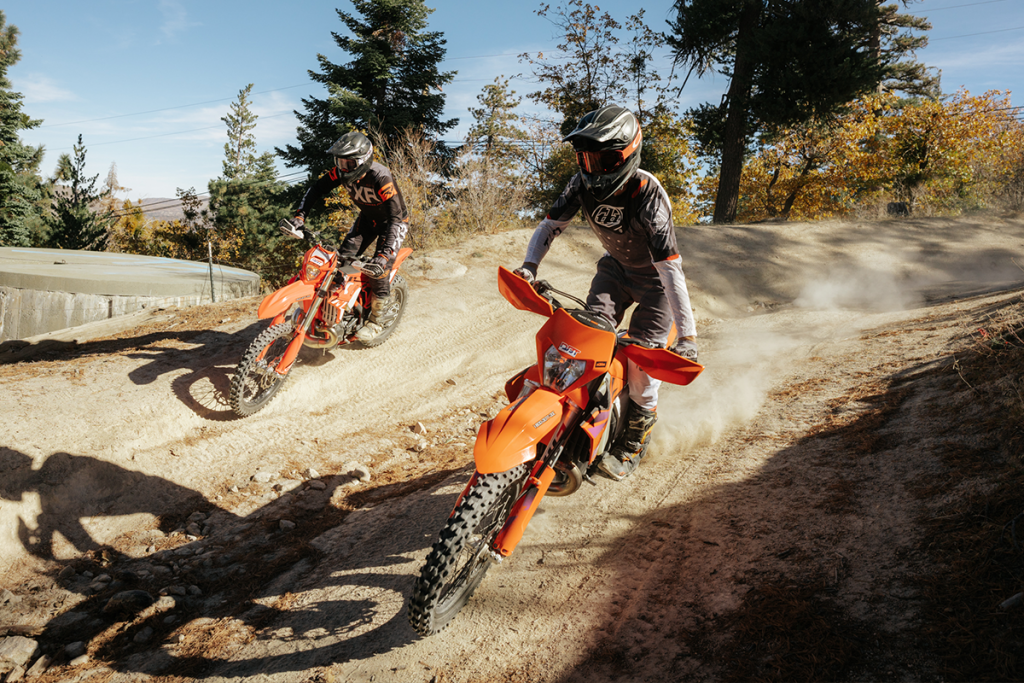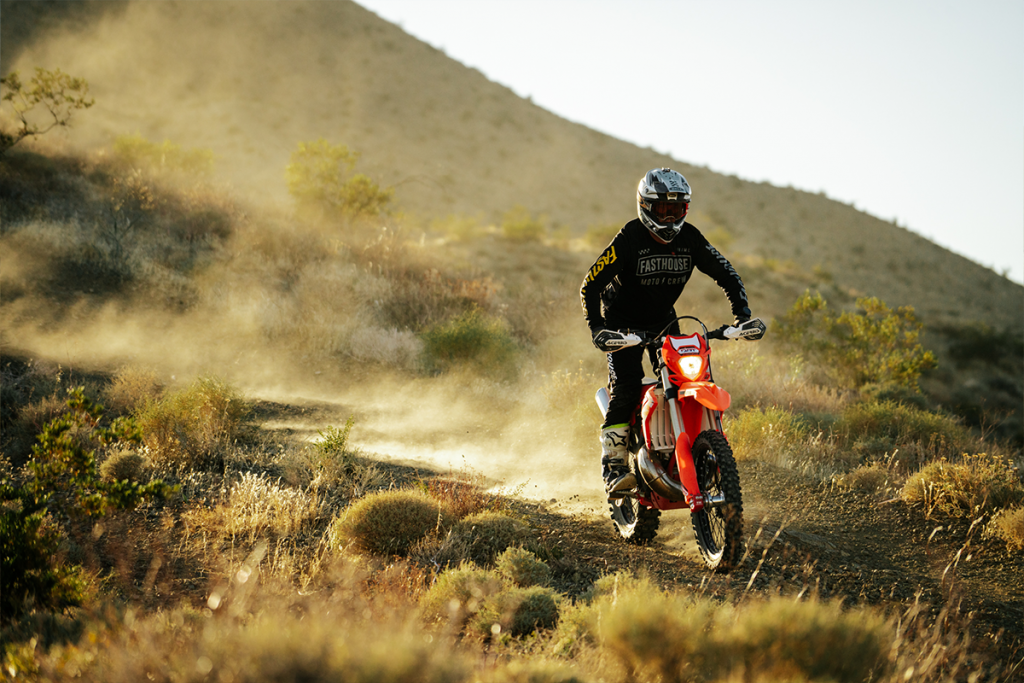What Is The Ultimate Trail Weapon?
Story by Trevor Hunter, Jimmy Lewis, Photos by Trevor Hunter
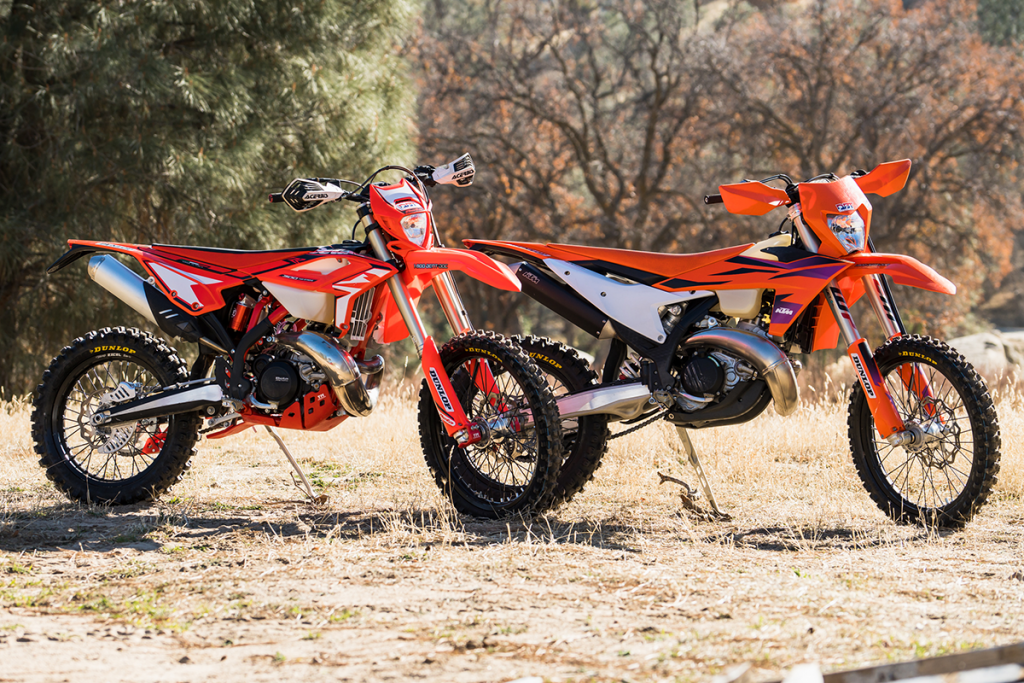
Despite all of the technological advancements and what can be ease of use with modern four-strokes, two-strokes still have a place in the world of dirt bikes, especially in the off-road segment. Big bore two-strokes have gone through a wealth of different CC sizes over the years, but today the 300cc two-stroke reigns supreme as the most ideal displacement big bore two-stroke.
Even better are all of the different options within the segment. Not only do you have several manufacturers in the game like KTM/Husky/GasGas, Beta, Sherco, and more, but also a seemingly endless combination of fuel delivery configurations amongst the brands. Of course, the tried-and-true carbureted bikes, the now outgoing TPi models from the Austrian brands, and the “latest and greatest” TBi models all outline the different technologies amongst the main players. And within those lines, you have some that are oil injected and some that still rely on mixed gas. Safe to say no one can complain about all of the different options available and try to find a bike that suits you! And now we have electronically-controlled powervalves as well.
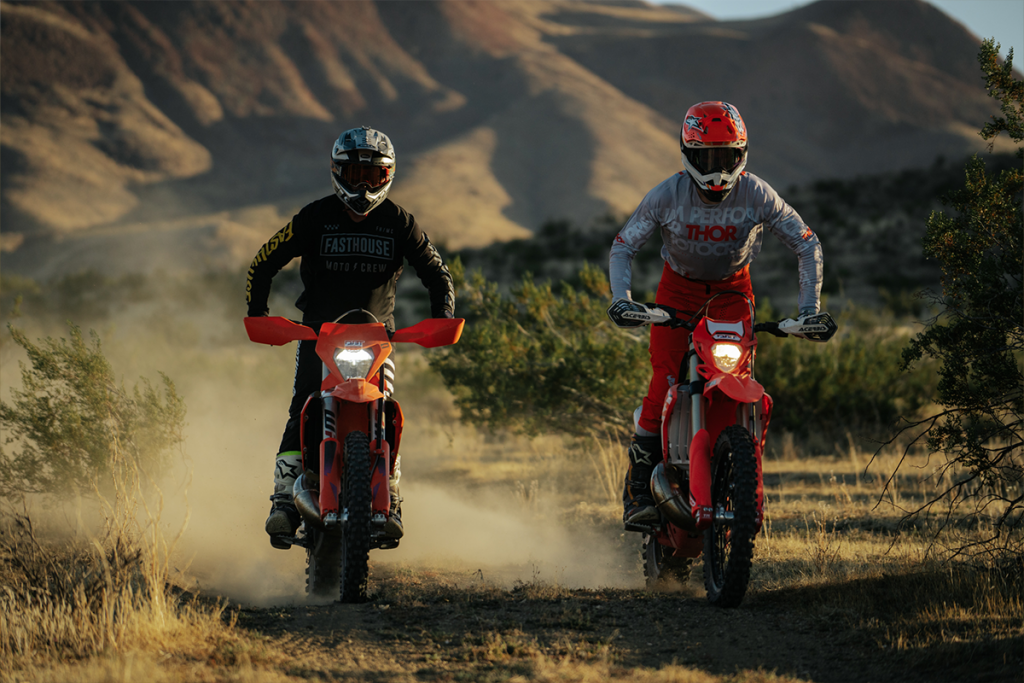
With a winter chalked full of trail riding, the 300cc two-stroke was our weapon of choice and we took two of the power players in this game to see where the dust settled. The lightweight packages are powerful, torquey, and downright fun without the girth penalty a four-stroke typically brings. Not to mention the more simplistic maintenance and lower cost from purchase to rebuild time. Two strokes are continuing to evolve, hopefully here to stay, and we’re here to put them to the test.
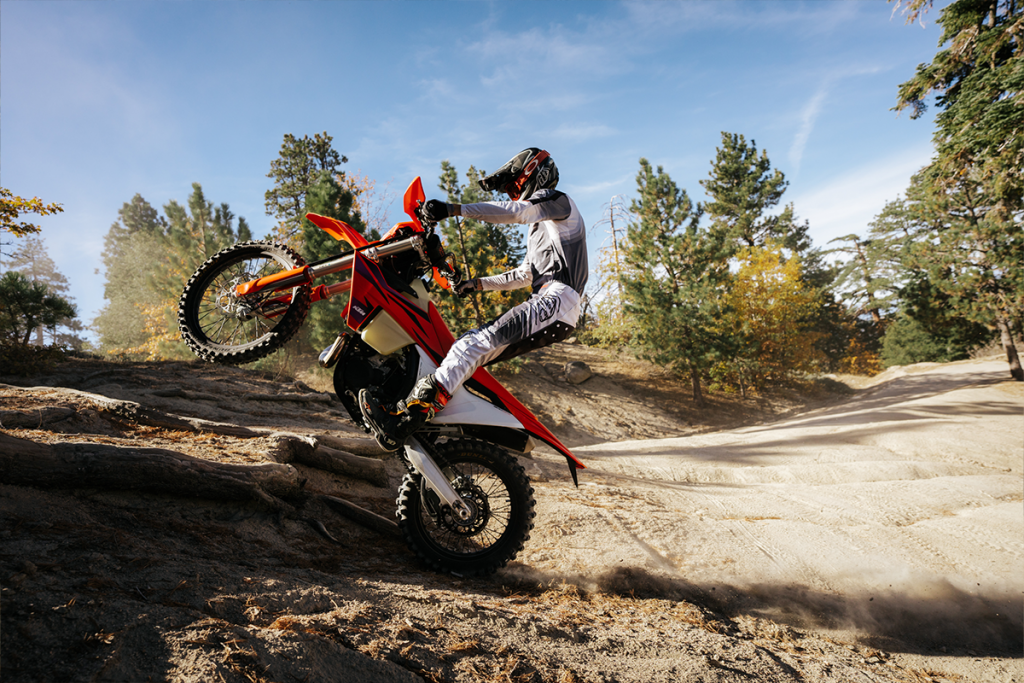
We’ve taken the 2024 KTM 300 XC-W and 2024 Beta 300 RR and put them head to head over hundreds of miles both in the desert and in the trees. The modifications to these bikes are short and sweet and sometimes purposeful – the Beta received Acerbis handguards (none came stock on our bike). TM Designworks provided a beefier skid plate (we try our best to keep these bikes looking nice and protected while “testing”) and a chain guide. We added fork lug protectors and a Bulletproof Designs chain guide brace. Later in the test, we added a Fasst Company Flexx handlebar and Impact footpegs.
The KTM was largely stock aside from swapping out the ECU for a flashed unit from TBITunning.com in the later stages of the test.
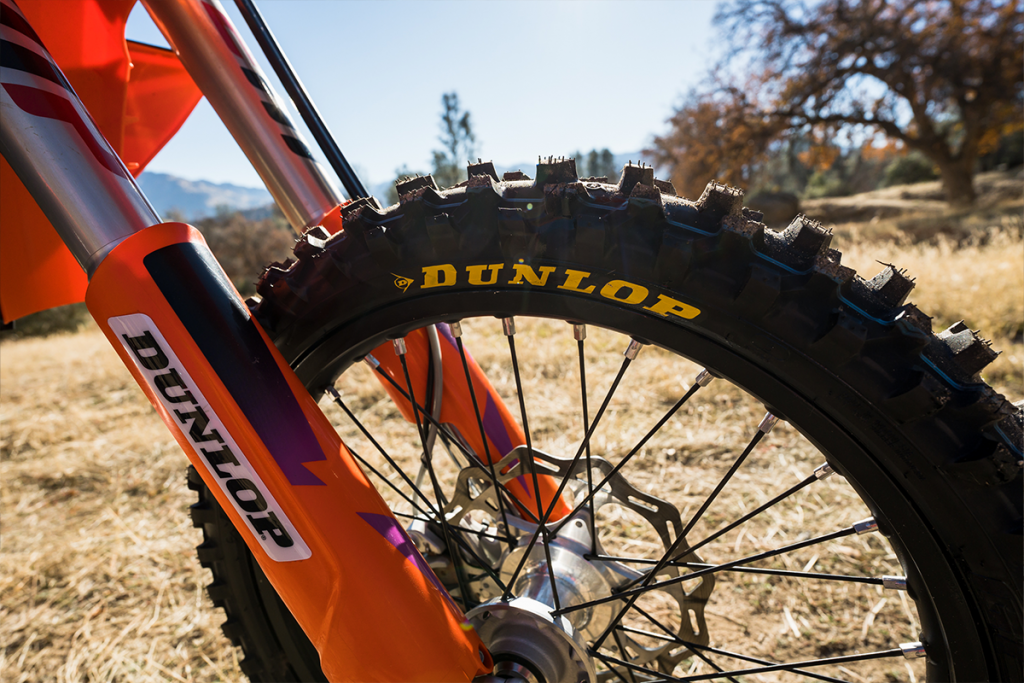
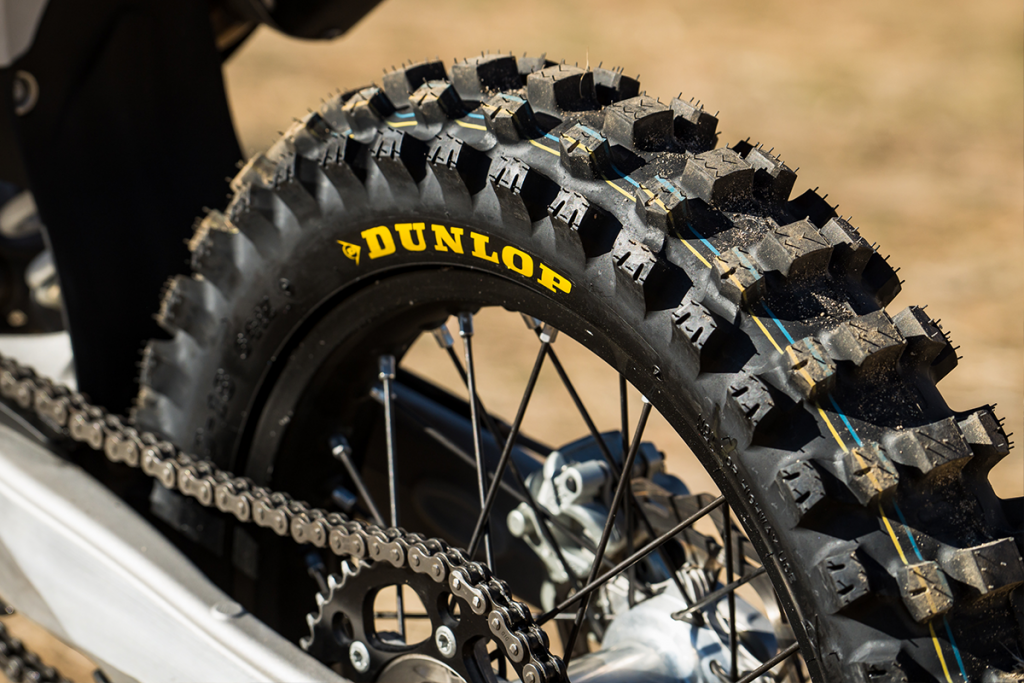
Both bikes were equipped with Dunlop’s MX34F/AT81 tire combo and stuffed with Airmousses. The FIM legal enduro tires that come stock on the Beta are simply bad and really doesn’t allow for a fair comparison between the two bikes if stock tires were left on. Thus, we equipped both bikes with the same fresh set of tires to keep a level playing field. Additionally, we’ve been testing the new Airmousse setup recently and have really come to like them, so stuffing them in our wheels to ensure we could ride worry free and put in endless miles without a flat tire is a no brainer. We’ll have a full Product Test on the mousses soon, but in short they are very light, have a nice supple feel without getting too wallowy or soft in most cases, and makes it easier to maneuver the bike in turns/singletrack over some other brands due to the light weight.
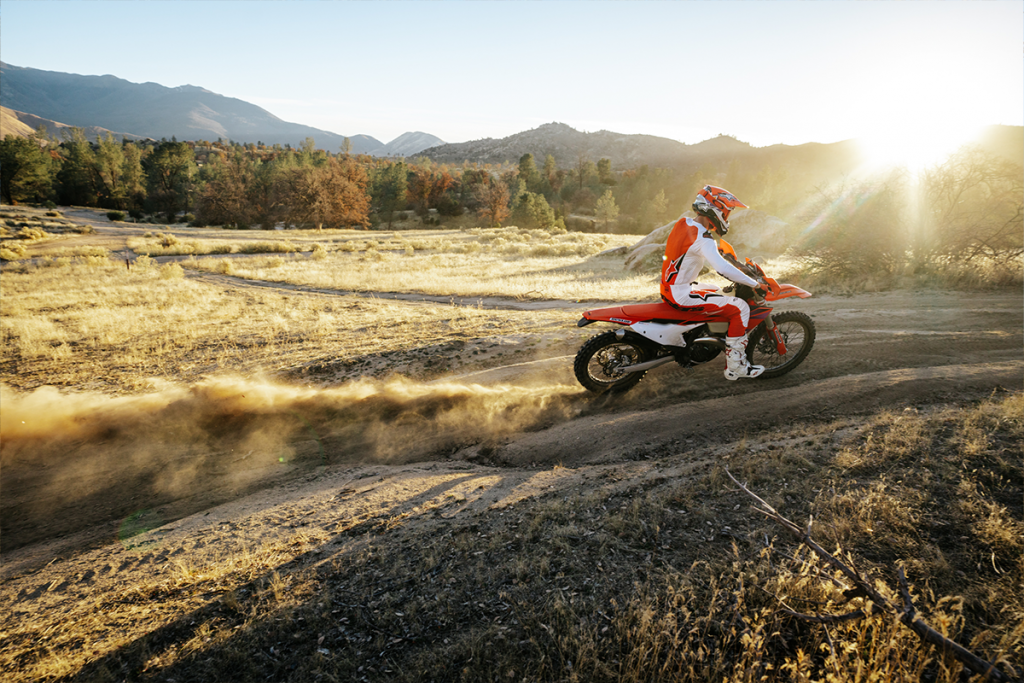
Breaking down the KTM, it has the newest TBi (Throttle Body Injected) technology which is the same concept as a four-stroke and is fed premix through an oil injection system. Likewise, it features the latest chassis design, yet still retains the linkageless PDS system, but incorporates the new closed-cartridge XACT spring fork that is the same as seen on the XC race bikes.
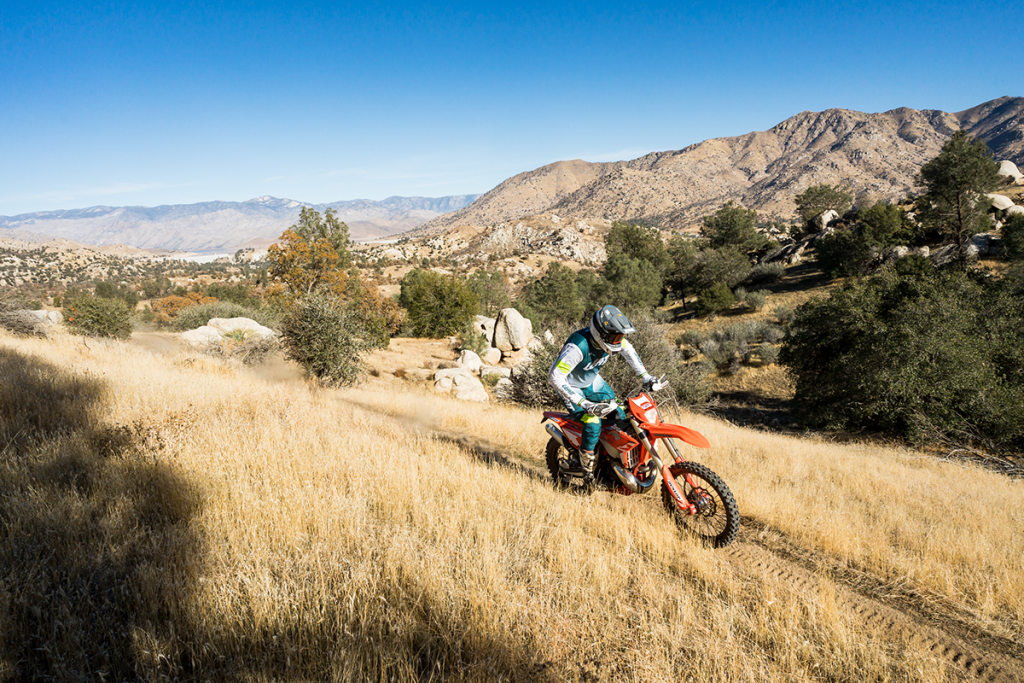
Breaking down the Beta, the 300 RR hasn’t seen too many changes in recent years, but is still equipped with a Keihin carb, a Sachs open-cartridge fork and matching shock, and oil injection.
Power
Although these are both 300cc off-road two-strokes, these bikes couldn’t be much more different on the trail and it starts with the motor. The 300 XC-W TBi is like a cross between an old carbureted bike and the now outgoing TPi engine. It has more bark and snap than the TPi, giving the bike a more lively and exciting feel, while still allowing the engine to crawl at the lowest RPMs with no hesitation. Something the KTM is also very good at, and it ties in with the chassis and suspension, is it’s nearly impossible to break traction. No matter how hard you twist the throttle, the rear wheel hooks up and drives you forward. The linear power delivery put out by the Austrian power plant isn’t the most exciting until you truly appreciate what it’s doing and how easy it is to ride. This equates to a fast motorcycle, despite it not sounding or feeling like one, and it makes the Katoom a contender.
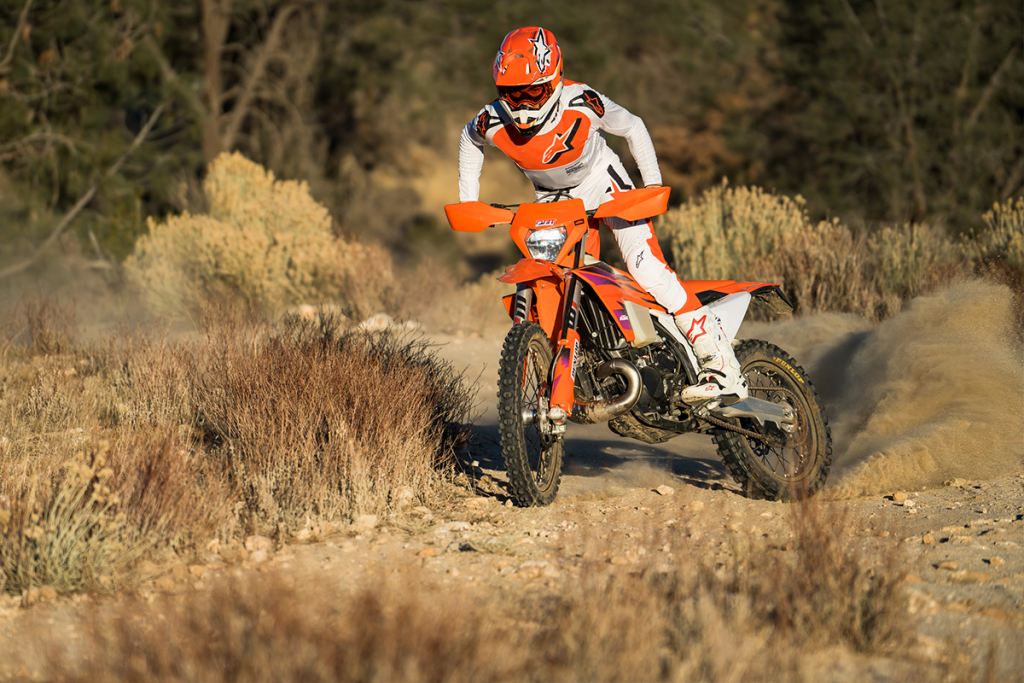
On the other end of the spectrum, the Beta is relying on tried-and-true technology and it still works. The 300 RR packs a meaner punch down low and boasts a progressive power delivery with a . The crisper throttle response lightens the overall feel of the bike and is more appealing to younger, aggressive riders. A quick hit of the clutch really livens up the engine and gets it moving in a hurry. As good as the traction is on the KTM, the Beta doesn’t deliver in this department. Part in due to the engine character, and part in due to the chassis/suspension. The RR is more willing to spin the tire than the XC-W, and can be a bit more of a handful to hang on to at times. Though, what’s most impressive is how similar it is as lugging at low RPMs very similar to the KTM. As a carbureted engine, it’s hard to imagine it can be as good as the throttle body injected engine in this department but it is.

Most riders felt the Beta was faster simply due to the more exciting engine character, but in every situation, the KTM and Beta were equal. The extra vibration on the Beta makes it feel more aggressive, and the Beta has more distinct powerband characteristics. Off the very bottom it hits a little harder and then a bigger top-end surge compared to its flatter mid-range. We would call it a more progressive power build in comparison to a very linear KTM. Which is better? Depends on the preference of the rider and for some of our older testers, how long they’d be on the bike at one time. The KTM, because of its lack of vibration and easy roll-on power was favored for a long duration bike, whereas the Beta gave them the quick hit they think they want before eventually wearing them down by the end of the day.
One stark difference is in the amount of vibration between the two bikes. The KTM has virtually no vibration to it at all. At the lowest of RPMs to screaming the motor on a hill climb, there isn’t much to be felt and most liked this. The Beta, while it doesn’t shake your teeth out and put your feet to sleep, does have some vibration to it – mainly felt through the pegs. As you’d expect, it became more apparent as the revs got higher, but it is still much better than a typical big bore two-stroke would feel a decade ago.
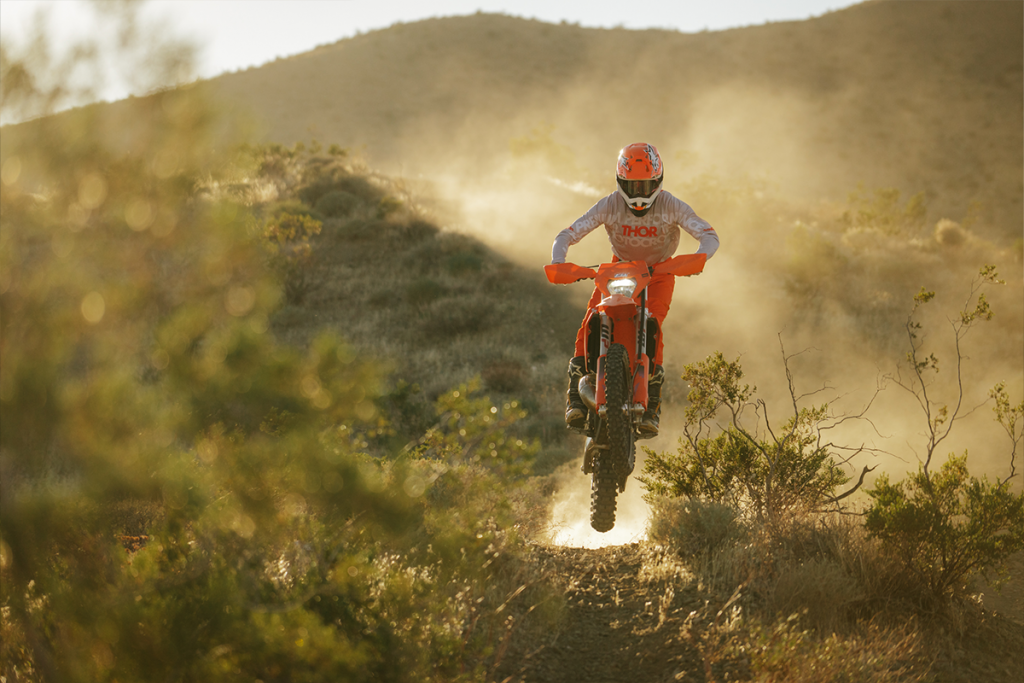
The transmissions both feel well spaced on each bike. On both bikes, third gear is the magic “do-it-all” gear. You can lug the bike and climb some pretty ridiculous stuff without abusing the clutch, and get it up to a good trail riding speed all in the third gear, though having a six-speed spread is welcomed on both bikes to cover both ends of the spectrum.
In the desert, it was almost unanimous that our riders preferred the Beta engine over the KTM due to higher speeds and more favorable conditions to an aggressive engine. However, once speeds slowed and we got into the trees, it was 50/50 as the younger riders preferred the Beta while the older crowd grew fond of the KTM for its ease of use.
Suspension
In terms of suspension, each bike is very unique from each other. The KTM boasts the newest WP XACT closed-cartridge spring fork and linkage-less PDS rear shock design. The Beta retains its familiar Sachs open-cartridge spring fork and standard coil spring shock in the rear.
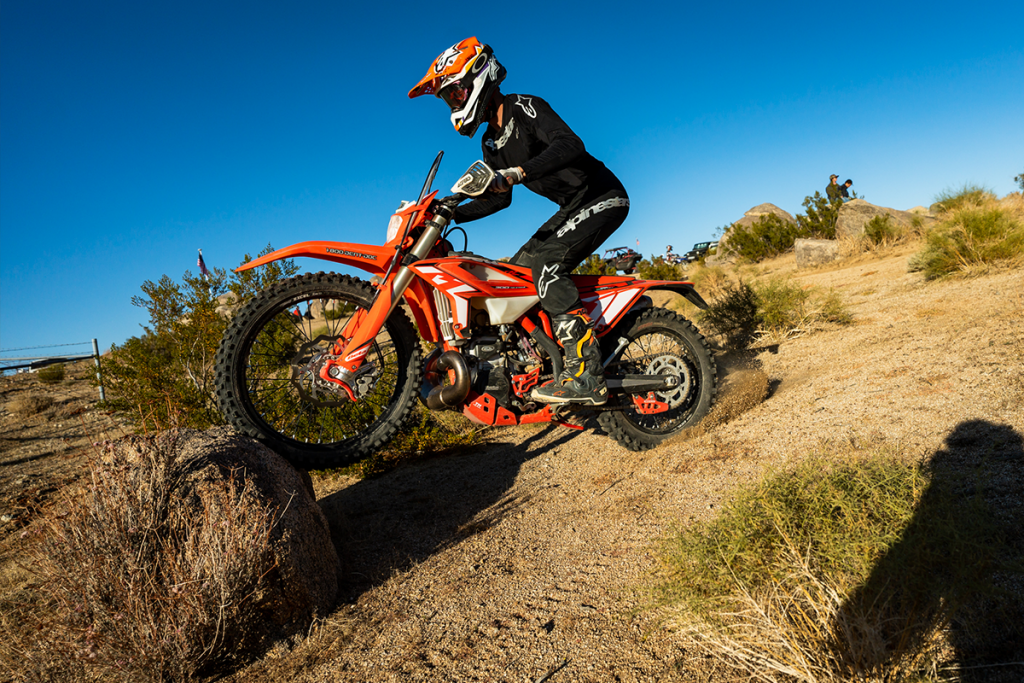
One thing unanimously liked on the KTM is its suspension. Front and back, both ends work really well for what they’re designed for – trail riding. Obviously, if we really push the pace on rough terrain, we feel just how soft it is as we’d expect. However, when we rode it appropriately and in typical trail riding terrain, we had no complaints. So much so that we never felt the need to touch a single clicker – we set the sag and rode it! Both ends are well balanced, have decent hold up for a trail bike, and cater to both aggressive trail riding and a casual cruise.

The new forks on the KTM are very good – not many liked the XPLOR spring forks on the previous generation XC-W line and while they weren’t perfect, we were able to get them working pretty good with some work. These new XACT spring forks are of very high quality and we feel they are a welcomed addition to KTM’s line of off-road bikes. Likewise, the PDS system has its pros and cons and for the most part, we have a lot of good things to say about it.

As stated earlier, the suspension in conjunction with the engine on the KTM really lends itself to finding and maintaining traction seemingly at all times. The bike stays planted and maintains traction on both wheels at times where we feel it shouldn’t. A slight negative to this is the bike feels heavier on the trail than the Beta, but the reward is that constant traction and again just how easy it is to ride this bike.
The Beta suspension is where we feel the bike struggles the most. It’s really tough to tune it to handle both small bumps and bigger hits. And even then, it really never handled bigger hits all that well. With some time, the forks started soaking up the smaller bumps well and although you could feel the feedback through your hands, it was a soft response that didn’t induce harshness or deflection.
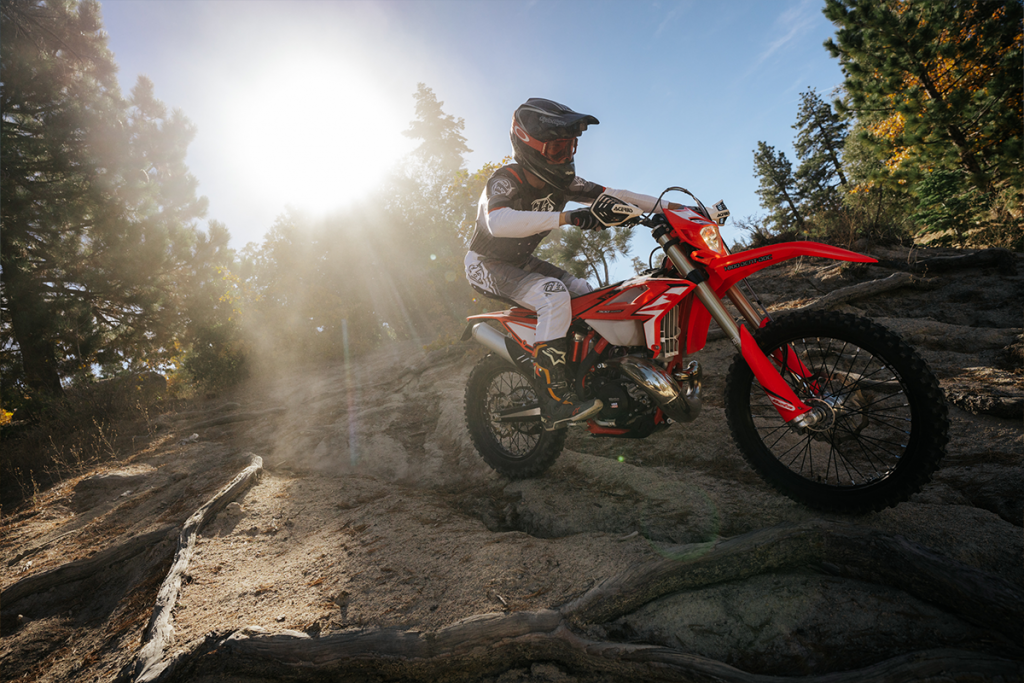
The rear shock especially comes with a really soft stock and the clickers are set to nearly all the way out. We turned both high speed and low speed compression in to 10 clicks out each which helped a lot with softening the blow on hard hits while still maintaining the comfort needed in the small bumps. Likewise, we ran the fork compression and rebound at 10 clicks out each and ran the fork preload all the way out – shock sag was set to 105mm.
One thing we found that really helped the front forks is running negative air pressure in the forks (ie. bleeding the forks with the front wheel on the ground). This helped improve initial bump compliance tremendously and is a quick and simple fix. We’ve also found in years past that just servicing the Sachs forks with new oil really helps the fork’s performance, but since we’re leaving these bikes virtually stock, we never got into the fork internals.
Chassis-Handling
Another stark difference (did we mention just how different these two bikes feel on the trail?) is the front end bias on the KTM vs the Beta. The XC-W feels front end heavy, a common trait on the newest generation Austrian machines with the anti-squat frame design. Contrarily, the 300 RR is very light in the front end, a common trait amongst the Beta bikes over the years.
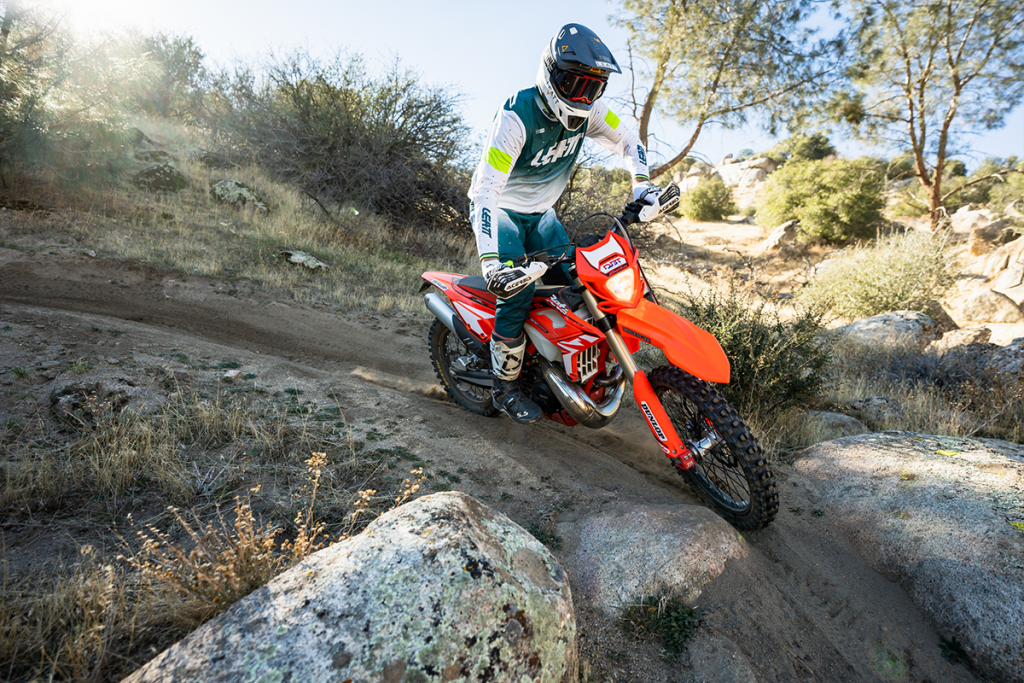
That light front end feel prompts an overall lightweight feel in the Beta that is felt on the trail. Another aspect with this Beta chassis is it feels overly flexy in the front end when hard on the brakes. When the front end is loaded under heavy braking, the front end becomes unsettled and nervous – something we’ve felt in past Beta’s. We’ve since ridden the newer frame design on the 2024 Race Edition bikes and this feeling isn’t as apparent which leads us to believe this is a character of this frame.
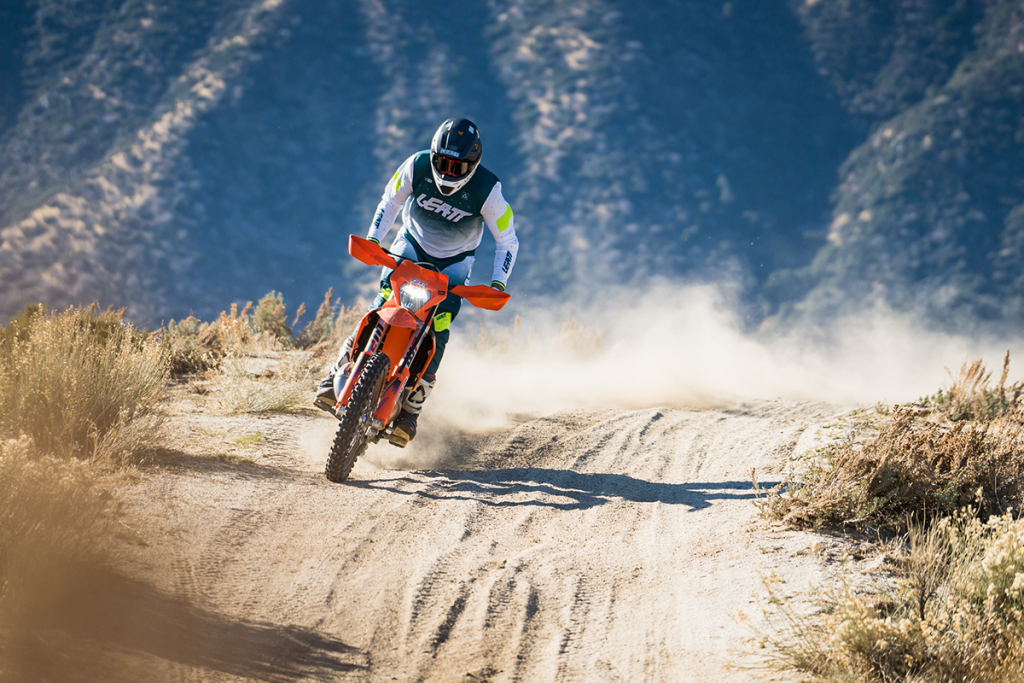
The KTM chassis feels firm, planted, and stable at all times and aside from being less “playful” or less on edge than the Beta, we really don’t have much negative feedback. Unlike what we’ve felt on the newer generation XC-F chassis, this XC-W platform isn’t nearly as rigid and offers an ample amount of comfort for long days on the trail.
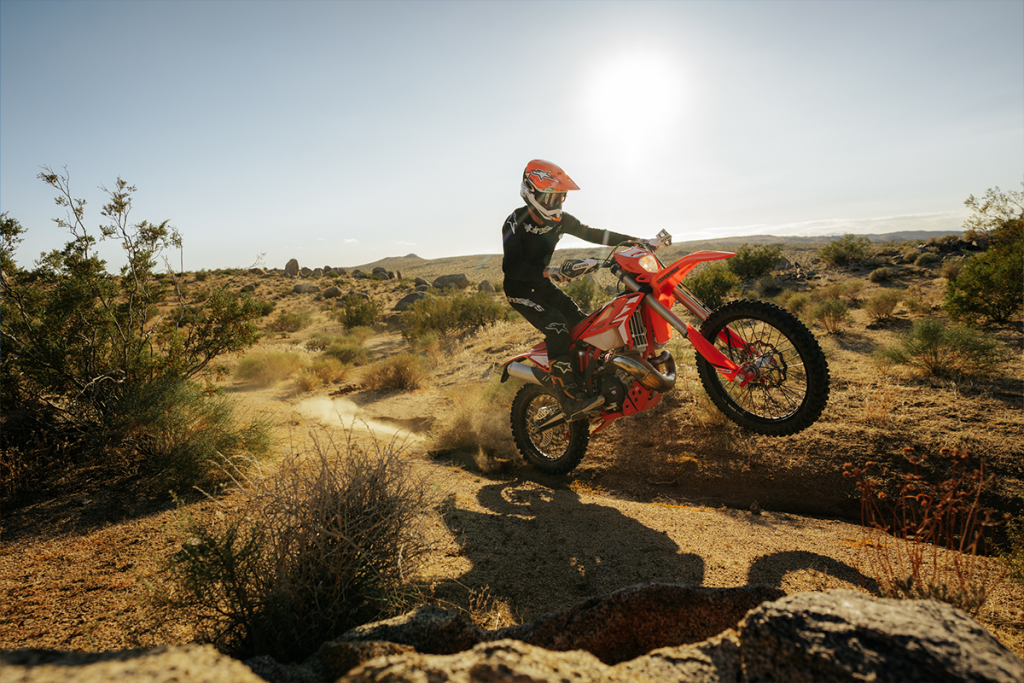
Onto durability and the Beta was pretty much bulletproof aside from the shock body untwinsing when loosening the preload adjuster.
The KTM developed a faulty oil level light which helped us cause the bike to have a no oil related piston seasure. We also smashed the KTM headlight and handguards in a crash and replaced the handguards with Acerbis units.
